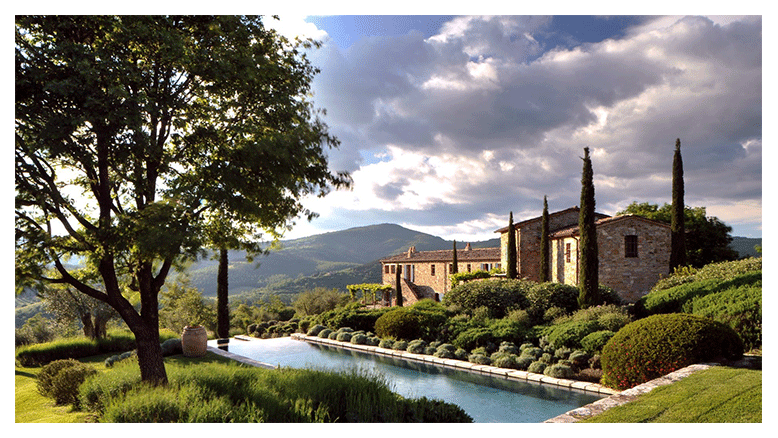The green heart of Italy, Umbria borders Tuscany to the north and west and Lazio to the south. It is situated on the shores of Lake Trasimeno and Marmore Falls and intersected by the Tiber River. Umbria is the only landlocked region on the Apennine Peninsula. Hills, mountains, valleys, and historic towns make up its landscape. Its name derives from the Roman territory of Umbria. This region was the homeland of the Umbri people, an ancient Italic tribe. They became assimilated by the Romans during their expansion. Unlike the Etruscans, the Umbri people lived in small villages in the Apennines rather than in an urban society.
Today, Umbria is a well-hidden gem in Italy that consists of two provinces, Perugia and Terni. Perugia is the regional capital. Also, Perugia is the largest medieval walled city in Italy, making it unique and breathtaking. You’ll encounter fascinating towns and villages, tons of culture, palaces, beautiful scenery, delicious food, castles, fortresses, etc. Vibrant life and a laid-back atmosphere make this city very appealing. Yet, mainstream tourism ignores it. So you won’t have to deal with the tourist crowds like in Florence or any other Tuscan region. You will, instead, experience a bygone era among the mysterious medieval alleyways with their arches and stairways. To mention one more thing, Perugia is a chocolate-producing agricultural trade center. There is a famous Euro Chocolate festival in the Chocolate hometown, where artisan producers still produce decadent confections. As far as I know, the festival takes place every autumn.
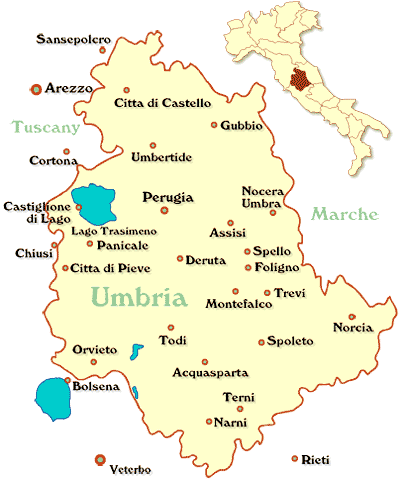

The best time to visit Umbria is between May and October. Over the long weekend during August, my road trip to Umbria started in Florence. Ah, I still remember, a cool breeze blowing through my hair from the car window as I listened to some ’70s classics. Now that’s how summer should be!! Although Umbria is full of hidden treasures, I only visited a few small towns in the province of Perugia.
CASTIGLIONE DEL LAGO
From the northwest of Umbria, this was my first stop since Florence and the entrance to Perugia. The charming village of Castiglione del Lago developed on what was once a tiny island in Lake Trasimeno. The town stands on a rocky promontory overlooking Lake Trasimeno with an impressive castle, Rocca del Leone. It has rich ancient Etruscan and Roman origins, retaining its charm for over a thousand years due to its old town center, enclosed within medieval walls.
The magnificent Palazzo Della Cogna is a 16th-century fortress worth exploring while visiting this village. The resorts of Castiglione del Lago offer a spectacular view of Lake Trasimeno, together with well-equipped shorelines and camping areas. It is an ideal choice for those who want to enjoy a relaxing break by the lake. Although this was a brief stop for me, I managed to take a visual snapshot of the view in my mind before I headed off to my next destination.
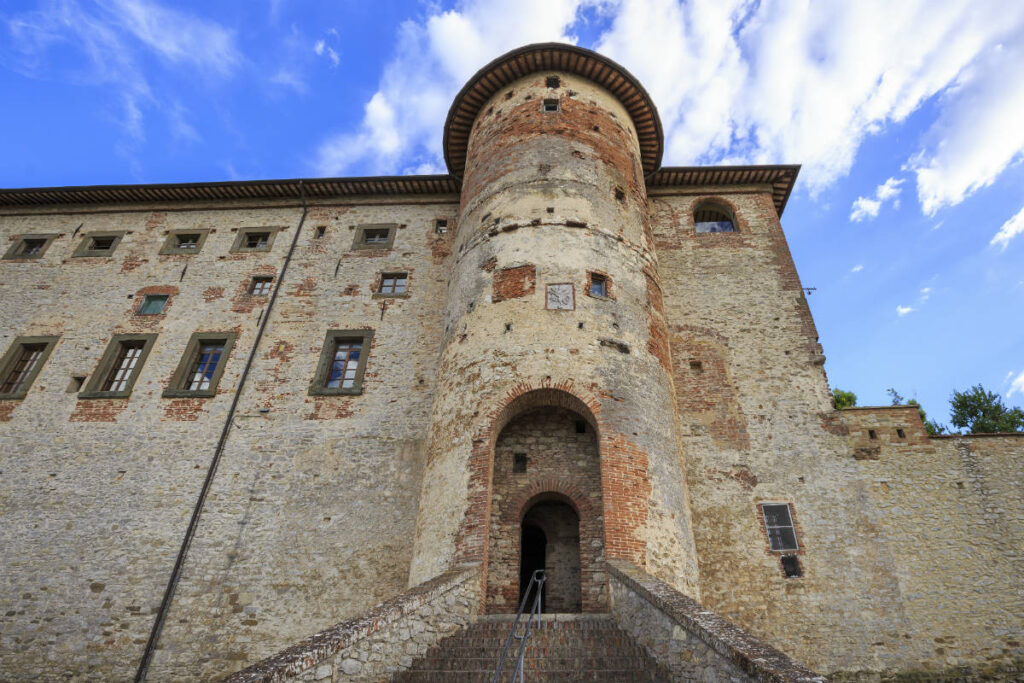
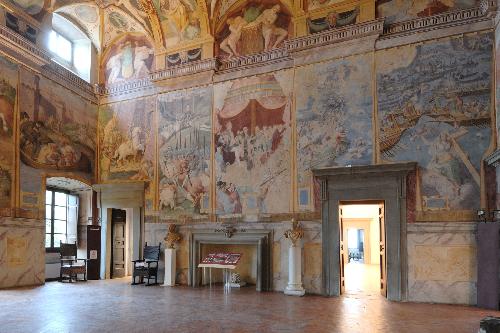
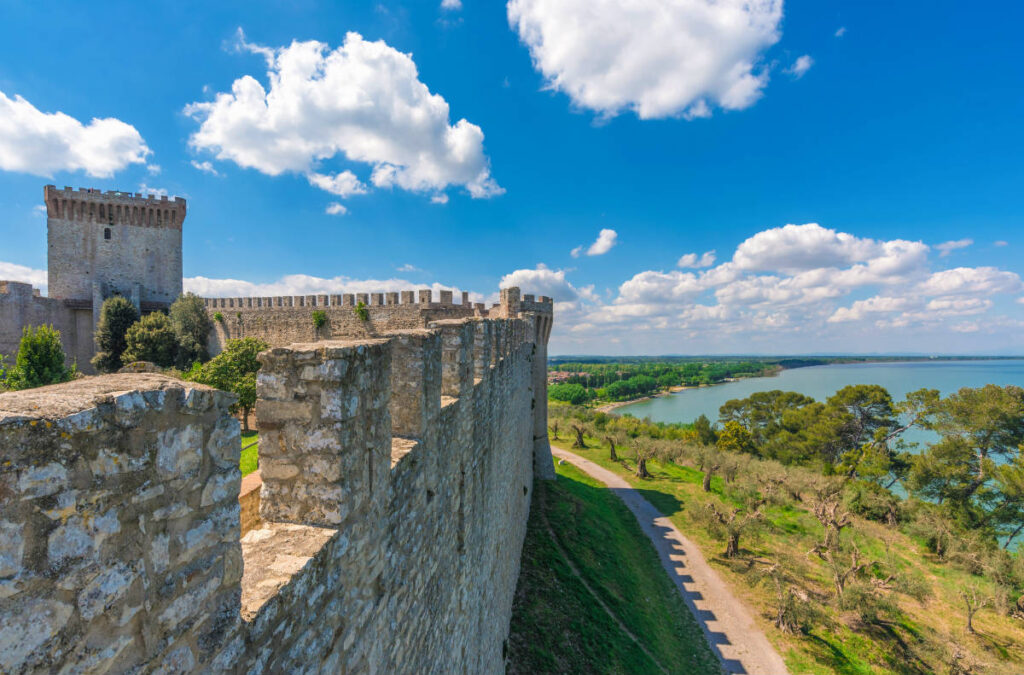
PIAZZA ITALIA, PERUGIA SQUARE
My first impression of old Perugia was the central square. Several hotels, banks, and restaurants are located in the Piazza, making it look commercial but with a touch of ancient Etruscan culture. Before exploring the medieval streets a little further, we decided to try some Perugian specialties just as lunchtime rolled around. The restaurants are much smaller here than they are in Florence. But the good part is that there aren’t too many tourists, or at least it was nearly empty when I visited. If you want to try Umbrian flatbread sandwiches stuffed with vegetables, cheese, and meat, you can pick it from any local store. Then you can sit next to the fountain at the square and enjoy the outdoors. Otherwise, head to the nearby Trattoria for Melanzane Parmigiana. You can, however, also choose from many other options.

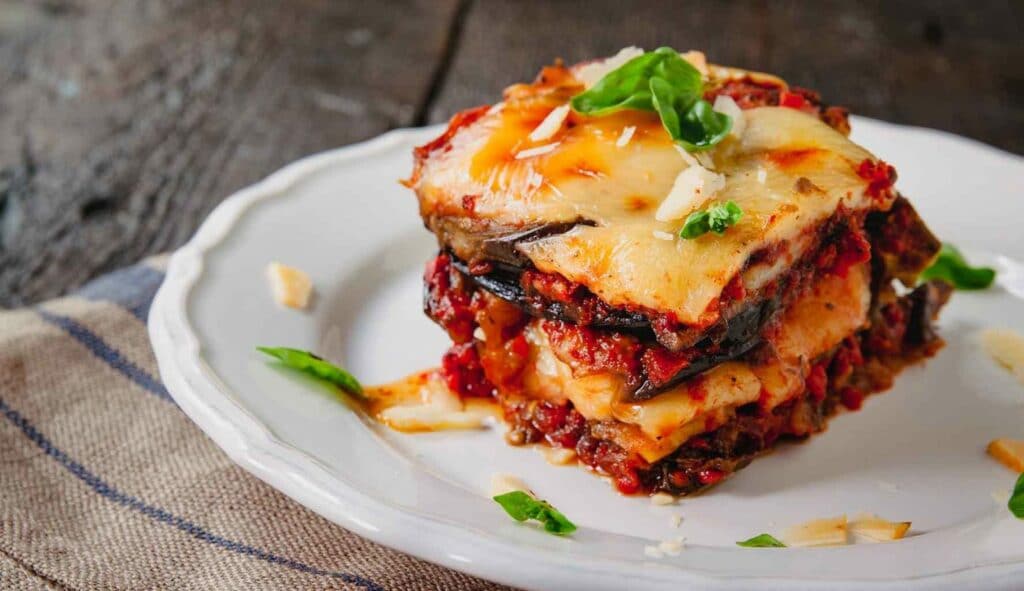

After lunch, we visited the Palazzo dei Priori, built around the late 13th century. It is said to represent the spirit of the city spectacularly. At one time, it served as the administrative and judicial center of Perugia. The Palace features sculptures of lions and griffins, representing the city. On the Corso Vannucci side, the Palazzo boasts a marvelous portal leading to the Sala dei Notari, decorated with frescoes. Today, the Palazzo dei Priori houses the National Gallery of Umbria, the region’s most prestigious art museum. Here, you will find masterpieces by local artists like Pietro Perugino, Piero Della Francesca, Pinturricchio, and many others.
Ensure you do not confuse this museum with the National Archeological Museum of Umbria, as they are both in the same area. Due to my schedule, I could not visit either museum. But if you want to learn more about the region, museums are the best place to do so.
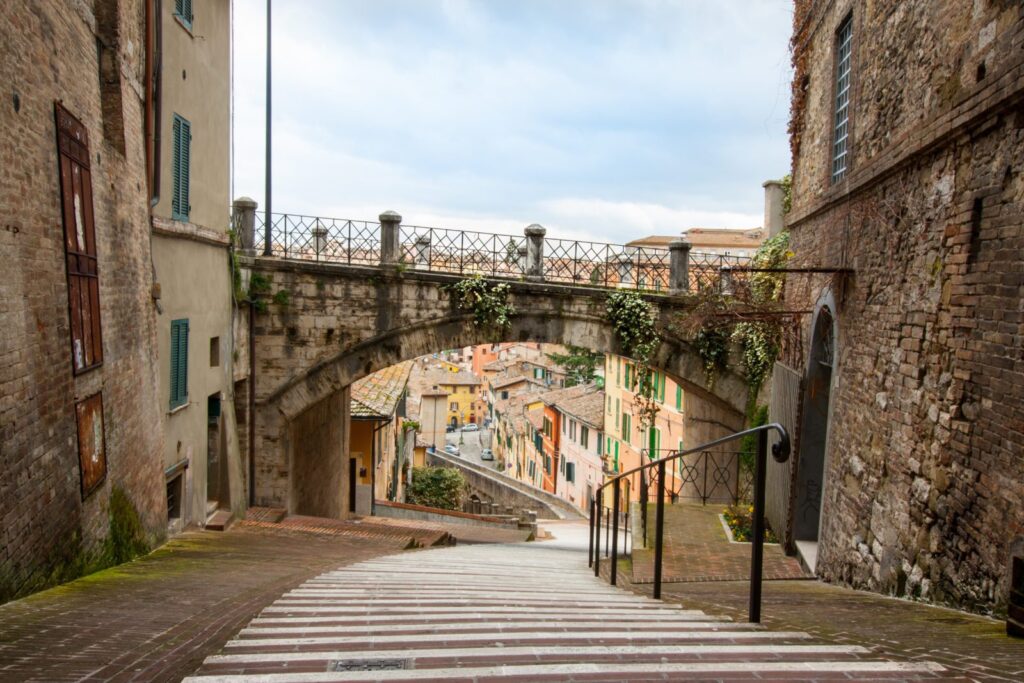
Afterward, we took the escalators down to Rocca Paolina from the Piazza. In 1540, after Perugia suffered defeat in the Salt War, Pope Paul III built the Rocca Paolina as a medieval fortress. Today, the structure is an evocative maze of underground passageways. It includes massive chambers, vaulted ceilings, and even the remains of a bread oven. The area was once the neighborhood of the powerful Baglioni family. As part of modern-day Perugia, the Rocca Paolina serves as a commuting route to the bus station and hosts various cultural events throughout the year. It is best to explore the fortress in the evenings.
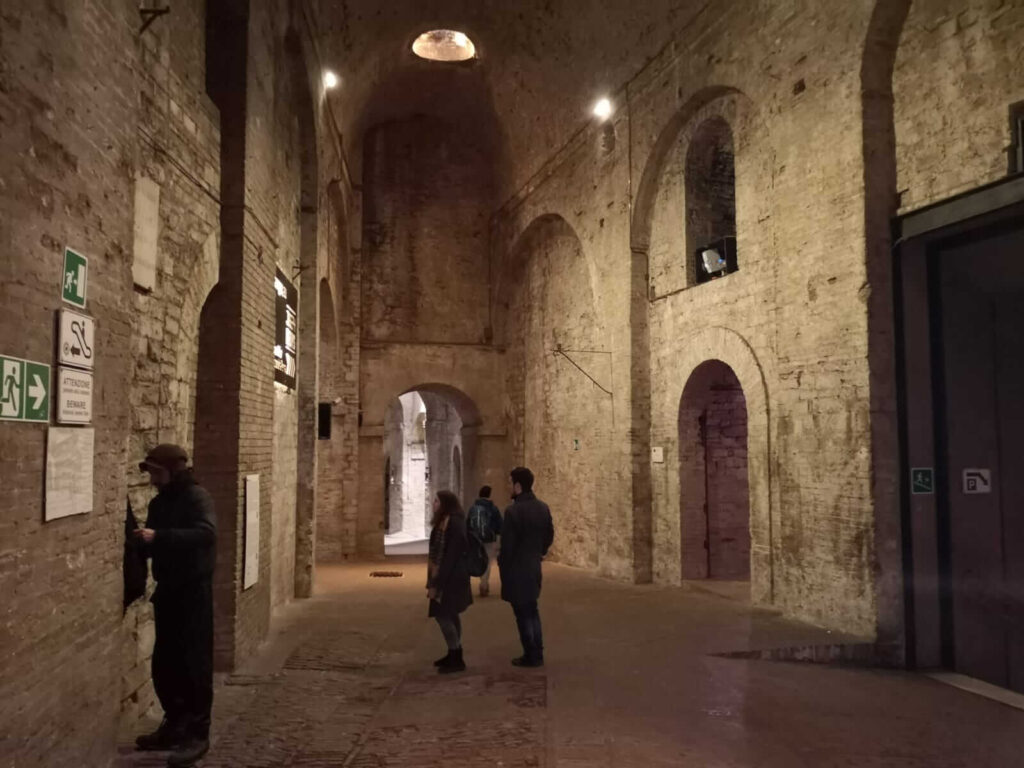
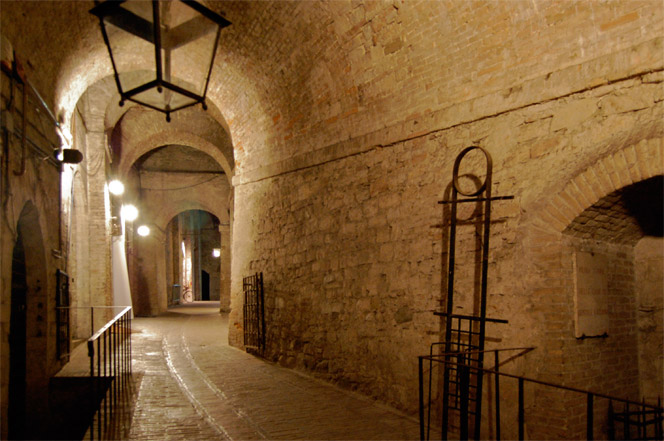
After walking the streets of Perugia for so long, we were exhausted, so we spent the night at a charming bed and breakfast near the Piazza. Soon after breakfast, we went to see the Pozzo Etrusco, also known as the Etruscan Well. The monumental underground water tank in the Etruscan Well was made from travertine blocks using the same technique as the huge travertine blocks of the Etruscan walls, which is a true feat of hydraulic engineering. It was one of the primary public water tanks of the city in the Etruscan and Roman eras, perhaps the most significant.
The construction dates back to the second half of the 3rd century B.C. and testifies to the advanced level of civilization achieved by the Etruscans. In the museum, visitors are introduced to the monument through an educational video in the wake of renovations. You must visit the Pozzo Etruscan even if you visit none of the other sites in the center of Perugia.
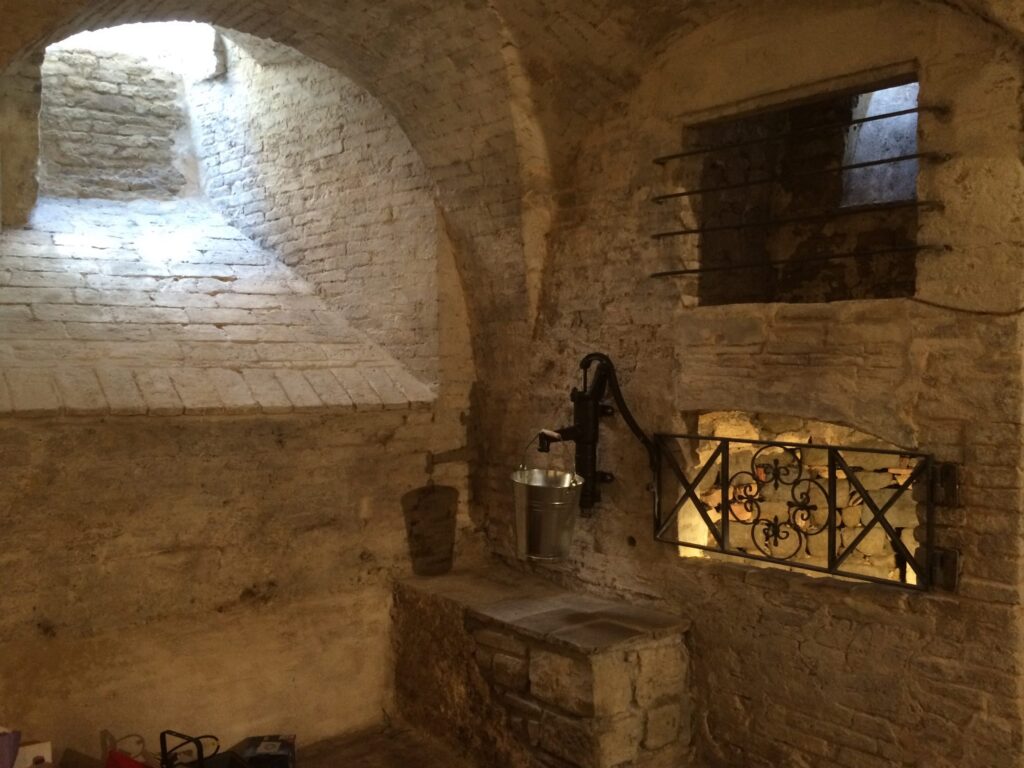
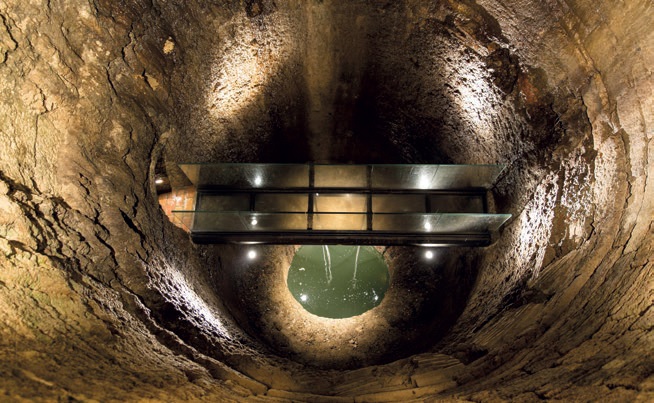
SPELLO, UMBRIA
After a stroll around the Etruscan Well, we drove to Spello for lunch. On a plateau overlooking the Spoleto Valley, the medieval town is picturesque. There are not many historical sites to visit in the area besides Santa Maria Maggiore church, with its exquisite frescoes by Pinturicchio.
Yet, one of the distinctive features of Spello is its small-town charm, with its narrow alleyways, century-old white stone buildings, and pleasantly relaxed ambiance. The perfect thing about this place is to sit on a diner or café terrace under the trees, drink wine from the local region, order some good food, and enjoy life. The locals and the tourists congregate to drink and dance in broad daylight while listening to some excellent Latin music without worrying about what day it is. But then, Europe is generally like this.
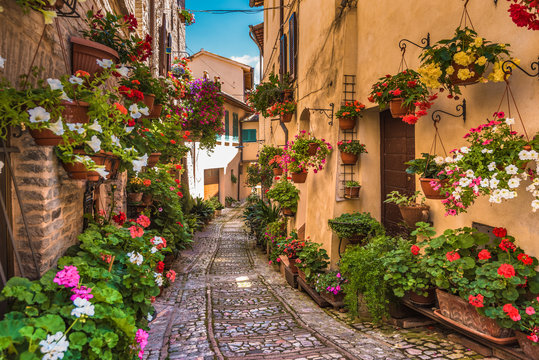
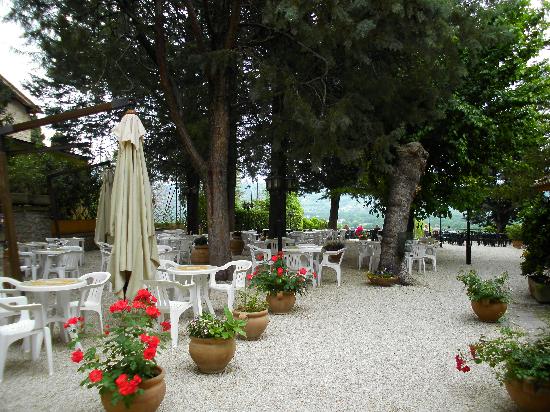
ASSISI, UMBRIA
After enjoying a wonderful afternoon, we headed toward Assisi. It is known as one of the most famous Italian cities of peace, where St Francesco was born as a boy and later became a saint, making it one of Italy’s Unesco World Heritage sites. St Francis and his friends gave up worldly wealth for the sake of the poor and founded the Franciscan monastic order. Thousands flock to this pink-tinged town to pay homage to St Francis and fully enjoy the peaceful contemplation that accompanies such a place. This hilltop city in Umbria, located on the slopes of Monte Subiaco, also exhibits well-preserved medieval architecture.
A famous site in Assisi is the Basilica di San Francesco, where Francis rests. Then, you have two overlying churches, the lower and the upper, each filled with astonishing frescoes by Giotto, Cimabue, and others. There is also the Assisi Duomo, with its magnificent facade dedicated to San Ruffino, the other saint of Assisi. The city also hosts several craft fairs and other annual events. You should spend the night in Assisi for the opportunity to visit it after all the pilgrims have left for the day. After dark, it is just so peaceful and magical to stroll its ancient white stone streets.
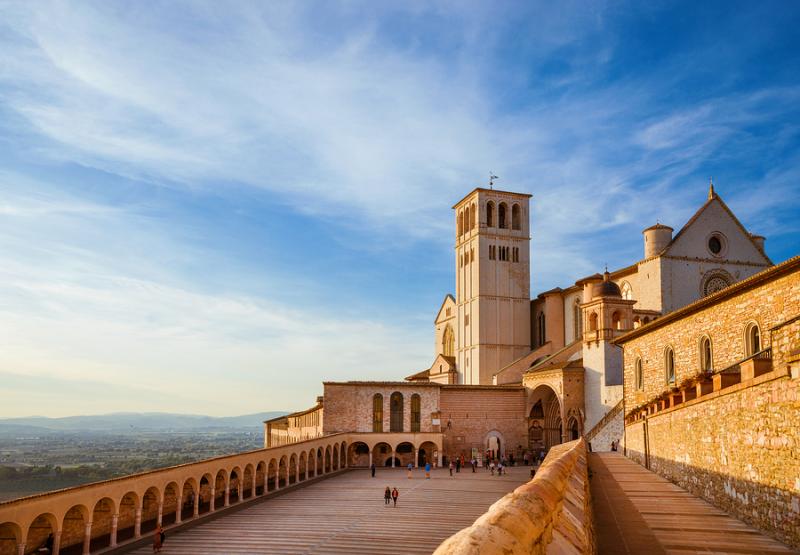
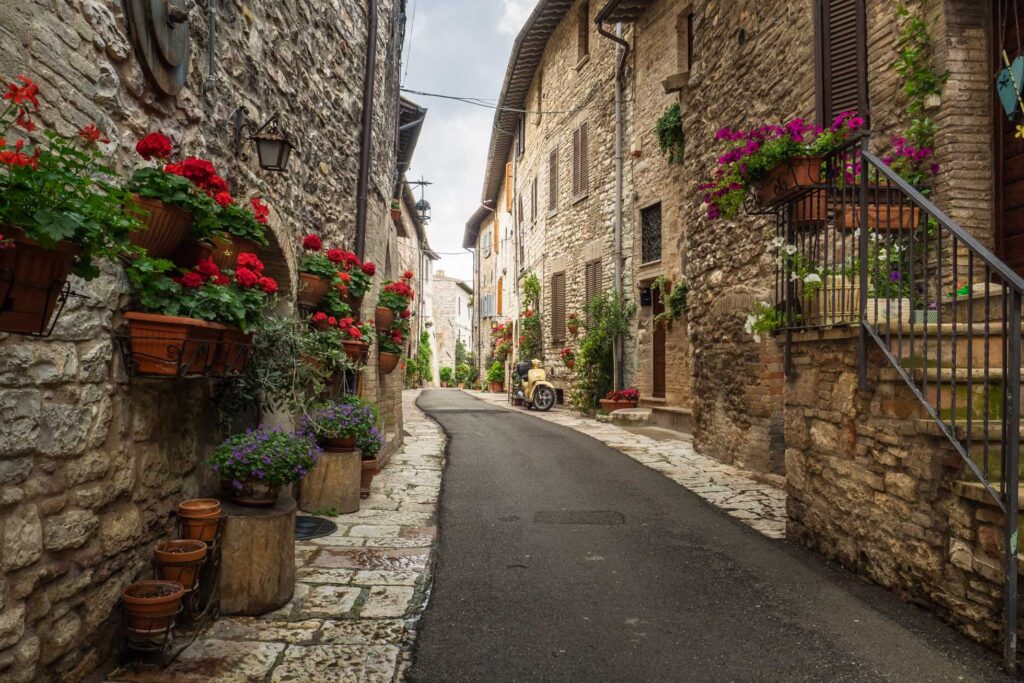
VALFABBRICA
This village is not far from the city of Perugia, on the Franciscan Path of Peace route that traces Saint Francis‘ journey when he left Assisi and took refuge in Gubbio. Set on the upper reaches of the Chiascio River, Valfabbrica is about 12 kilometers north of Assisi, and yet it feels worlds away from the neighboring cities. Several medieval villages dot the Valfabbrica area, including Giomici, with an ancient castle dating from the 11th century; Poggio San Dionisio, on a hilltop; and Collemincio, from the late 10th century. The historical center of Valfabbrica has traces of medieval walls and two towers. There is also a Romanesque Pieve with 14th-century frescoes.
For nature lovers, this land offers plenty of opportunities, from hiking in a landscape that remains intact and untouched in many ways; to enjoying local products of high quality, including truffles, lentils, chickpeas, cheeses, homemade sausages, and wines.
Indeed, it was this place that first drew me to Umbria. My boyfriend and I were traveling to visit his mother, who owns a beautiful home tucked between these hills in Umbria. Since she was also only there for a month, she invited us to stay the night and explore a little of Umbria at the same time.
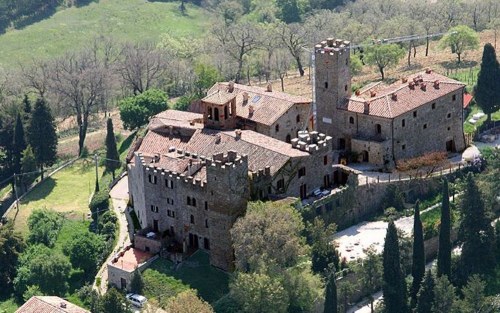
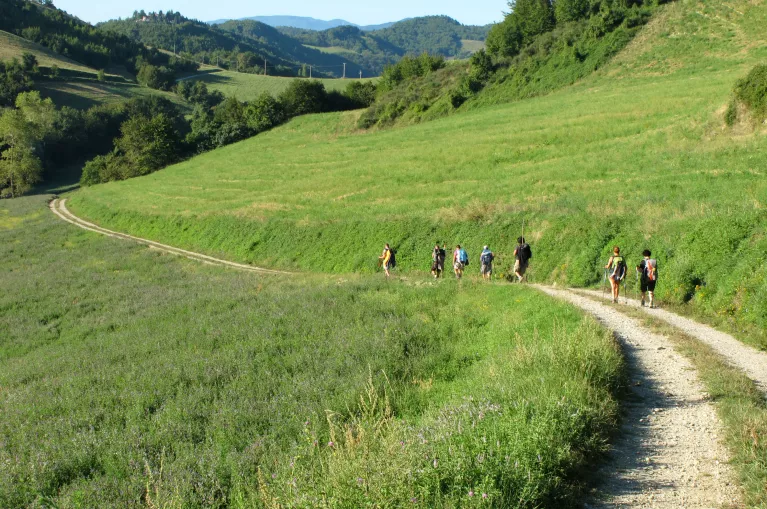
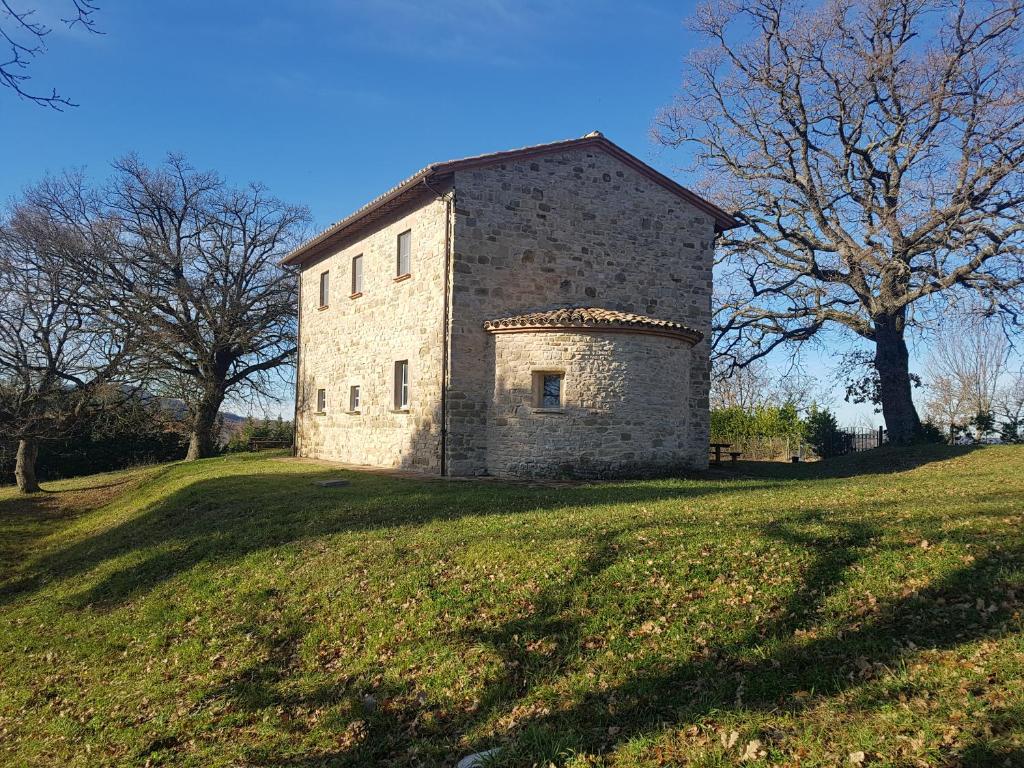


Umbria was a delightful experience, even though we could not cover all of its hidden treasures, such as the Marmore Falls; driving through Perugia’s regions with its narrow mountain trails was a sight for sore eyes. The trip was more of a weekend getaway than a complete tourist destination. Someday, I would like to explore the breathtaking valleys, forests, and waterfalls of the entire region.

